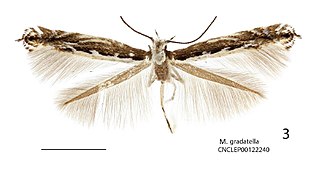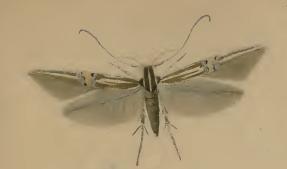
Vicia is a genus of over 240 species of flowering plants that are part of the legume family (Fabaceae), and which are commonly known as vetches. Member species are native to Europe, North America, South America, Asia and Africa. Some other genera of their subfamily Faboideae also have names containing "vetch", for example the vetchlings (Lathyrus) or the milk-vetches (Astragalus). The lentils are included in genus Vicia, and were formerly classified in genus Lens. The broad bean is sometimes separated in a monotypic genus Faba; although not often used today, it is of historical importance in plant taxonomy as the namesake of the order Fabales, the Fabaceae and the Faboideae. The tribe Vicieae in which the vetches are placed is named after the genus' current name. The true peas (Pisum) are among the closest living relatives of vetches.

The burnet companion moth is a moth of the family Erebidae. It is found in most of the Palearctic realm, from Ireland in the west to Mongolia and Siberia in the east and south to the Mediterranean and North Africa.

Ancylis badiana is a moth of the family Tortricidae. It is found in the Palearctic realm.

Cosmopterix is a large genus of moth in the family Cosmopterigidae.

Zygaena lonicerae, the narrow-bordered five-spot burnet, is a moth of the family Zygaenidae. The species was first described by Theodor Gottlieb von Scheven in 1777.

Phyllonorycter insignitella is a moth of the family Gracillariidae. It is found in all of Europe, except the Balkan Peninsula.

Phyllonorycter nigrescentella is a moth of the family Gracillariidae. It is known from all of Europe except the Balkan Peninsula.

Micrurapteryx gradatella is a moth of the family Gracillariidae. It is found from Fennoscandia to the Iberian Peninsula, the Alps and Romania and from Germany to central Russia, as well as in Tajikistan, the Urals, Siberia, and the Russian Far East.

Micrurapteryx occulta is a moth of the family Gracillariidae. It is recorded from across North America in the northern half of the continent, in Canada from the Maritime Provinces to British Columbia, north to northernmost Yukon. In the United States it has been found in Connecticut, Kentucky, Illinois, Colorado, Utah, Nevada, and California. The habitat consists of meadows, the edge of forests, open ponderosa pine forests, alpine meadows, the sea shore, and probably other habitats, from sea level to high elevations in the mountains, where suitable hosts occur.

Zygaena osterodensis is a moth of the family Zygaenidae.

Cosmopterix attenuatella is a moth of the family Cosmopterigidae described by Francis Walker in 1864. It is widely distributed in the tropics and subtropics of both the Old and New World, including the United States, Bermuda, the Cayman Islands, Virgin Islands, Dominica, Jamaica, Puerto Rico, Trinidad and Tobago, Costa Rica, Brazil, Ecuador, Peru, Argentina, the Canary Islands, Madeira, the Galápagos Islands, Cook Islands, Taiwan, Australia, New Zealand, Madagascar, Seychelles, Mauritius and Saint Helena.

Cosmopterix coryphaea is a moth of the family Cosmopterigidae. It is known from the Canary Islands and the Mediterranean region from Spain to Cyprus.

Cosmopterix lienigiella is a moth of the family Cosmopterigidae. It is found from Fennoscandia to Spain, the Alps and Greece and from Ireland to Ukraine. It is also present in eastern Russia and Japan. It is the type species of the genus Cosmopterix.

Cosmopterix orichalcea is a moth of the family Cosmopterigidae. It is known from most of Europe east to Japan.
Cosmopterix scribaiella is a moth of the family Cosmopterigidae. It is found from most of Europe to Japan.

Aproaerema anthyllidella is a moth of the family Gelechiidae. It is found in most of Europe, Kyrgyzstan, Iran and North America.

Xystophora pulveratella is a moth of the family Gelechiidae. It is found from central and northern Europe to the Ural Mountains and southern Siberia.
Chionodes braunella is a moth in the family Gelechiidae. It is found in North America, where it has been recorded from Alberta and British Columbia to Colorado, Arizona, California and to Washington, southern Ontario and Maine.

Syncopacma karvoneni is a moth of the family Gelechiidae. It was described by Hackman in 1950. It is found in Switzerland, Fennoscandia and northern Russia.

Vicia bithynica known as Bithynian vetch, is a species of flowering plant in the bean family Fabaceae. It was described by Carl Linnaeus, initially as Lathyrus bithynicus but later moved to the genus Vicia (vetches). The specific name is derived from Bithynia, an ancient kingdom situated on the north coast of Anatolia, in modern day Turkey.

















